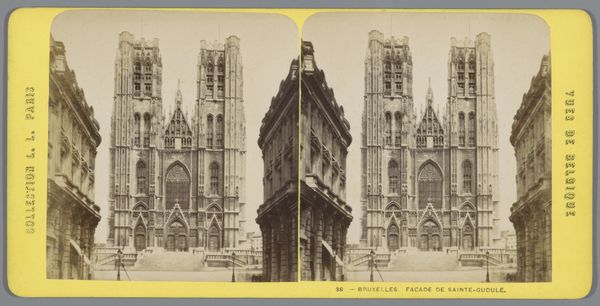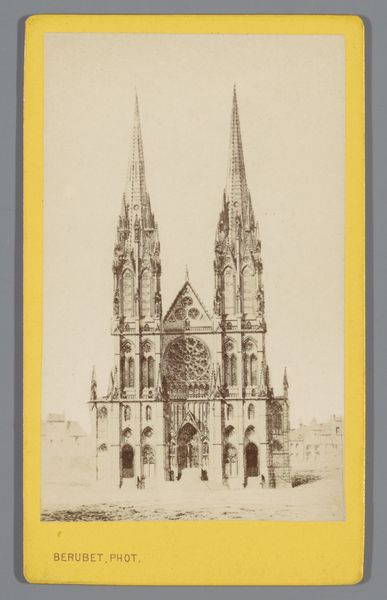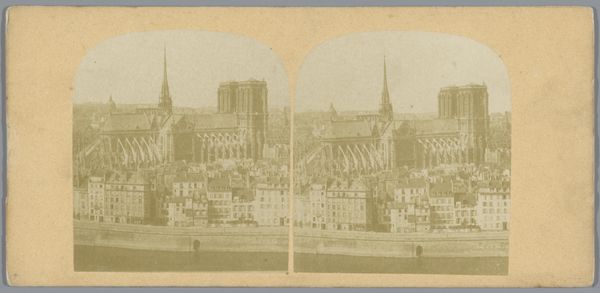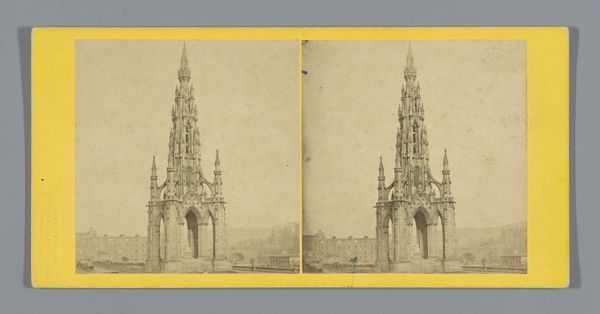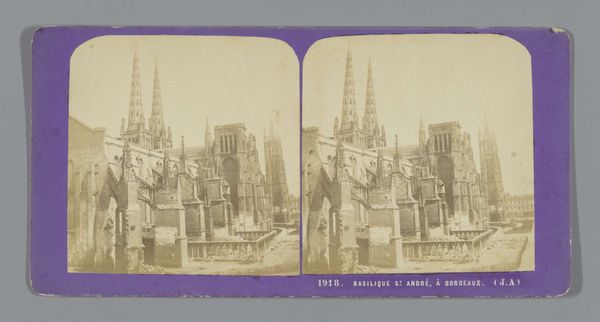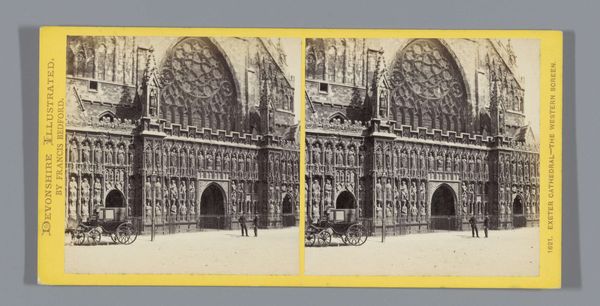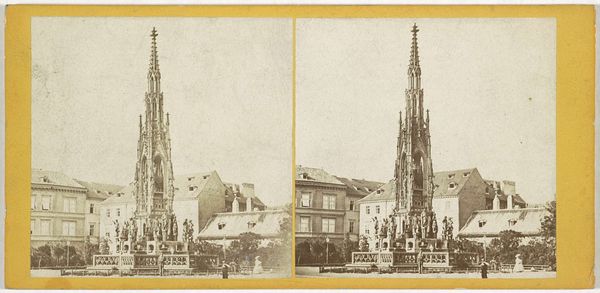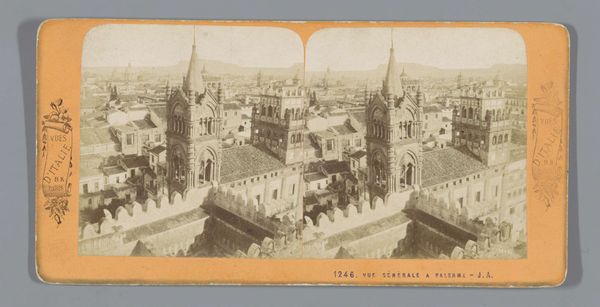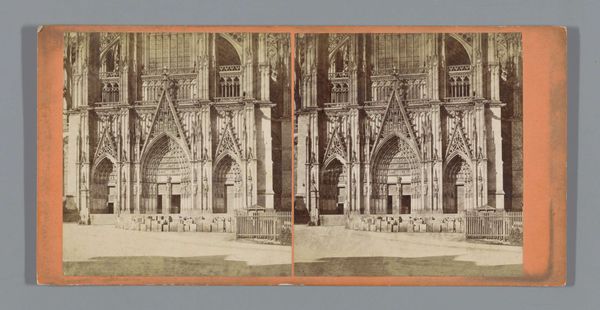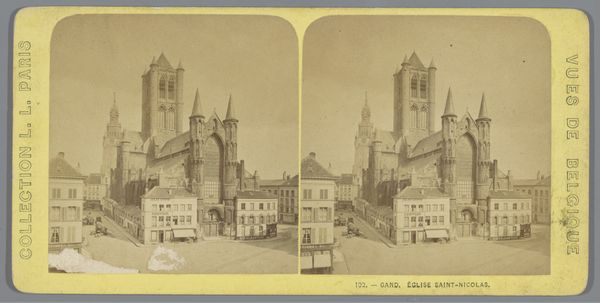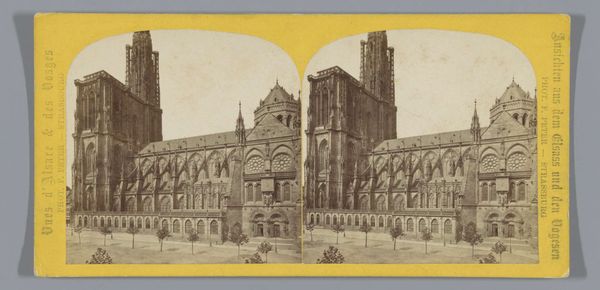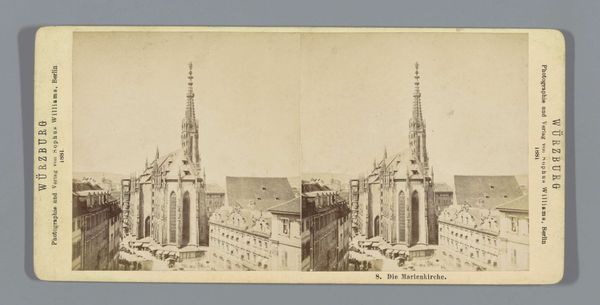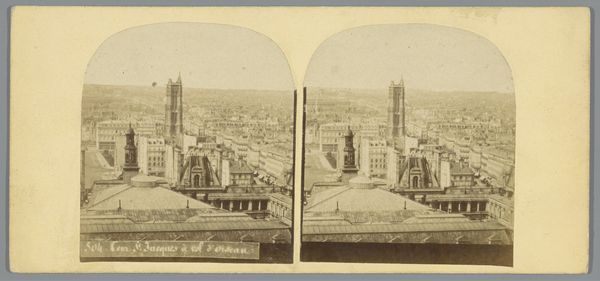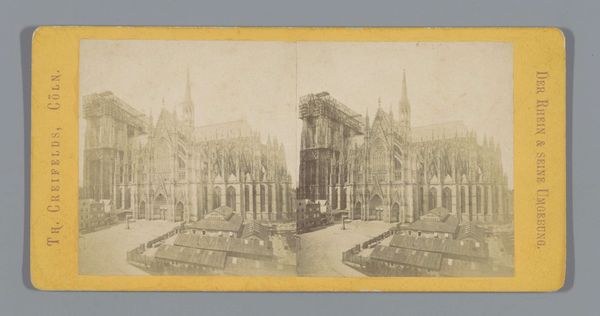
print, photography, albumen-print
# print
#
landscape
#
photography
#
cityscape
#
albumen-print
Dimensions: height 88 mm, width 178 mm
Copyright: Rijks Museum: Open Domain
Curator: Here we have an albumen print, a photograph entitled "Gezicht op de Notre-Dame van Straatsburg", which roughly translates to "View of the Notre Dame of Strasbourg", dating from between 1860 and 1880, by F. Peter. Editor: The cathedral absolutely dominates the composition! The spire feels almost aggressively vertical, juxtaposed against the tightly packed buildings below. There's something powerful, even a bit imposing, about its scale. Curator: Scale is crucial here. Strasbourg, caught between France and Germany for centuries, has long stood as a symbol of contested territory. Imagery of the cathedral played a critical role in solidifying national identities during periods of annexation, particularly regarding visual assertions of either French or German cultural heritage and power. This print existed within that political landscape. Editor: So the choice to showcase its immensity serves as a statement about dominance, quite literally reaching for the heavens but firmly rooted in terrestrial disputes. How might its production and consumption have been shaped by contemporary political narratives? Curator: These kinds of photograph albums became incredibly popular with tourists and served to reinforce these power dynamics for a widespread audience. Consider who purchased this image, who controlled its dissemination and who were omitted or misrepresented in the making of it. Editor: It really emphasizes how even a seemingly straightforward architectural image can be loaded with social meaning. We're not just seeing a beautiful building; we're seeing a symbol caught in the crossfire of history. Curator: Exactly. Photography, at this stage, often appears objective, but it’s important to analyze what forces made a supposedly simple representation possible. By dissecting the image, we engage with power structures and the narratives woven around identity and ownership. Editor: It leaves me pondering the layers of interpretation embedded within a photograph like this. Curator: Yes, that's what it’s all about! It's essential that we recognize these historical artworks are actively participating in discourses, and not passively representing what was merely there.
Comments
No comments
Be the first to comment and join the conversation on the ultimate creative platform.
